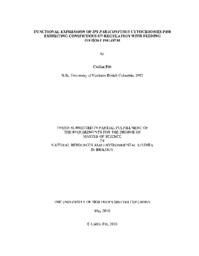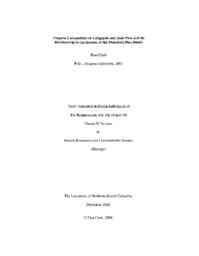Huber, Dezene
Person Preferred Name
Dezene Huber
Related Works
Content type
Digital Document
Origin Information
Content type
Digital Document
Description / Synopsis
Glyphosate is the active ingredient in many common broad-spectrum herbicides used in forestry operations to reduce the presence of unwanted, competitive plant species. As a result of aerial applications, non-target forest understory plants receive a sublethal dose of glyphosate-based herbicides (GBH) and develop abnormalities such as changes in reproductive morphology. Glyphosate inhibits the enzyme 5-enolpyruvylshikimate-3-phosphate synthase (EPSPS) of the shikimate pathway which produces the crucial aromatic amino acids for plant growth and other biochemical processes. There is very limited information on the long-term impacts of GBH on forest understory plant reproduction, fruit production, and vegetation production. Additionally, there are limited resources that discuss the impacts of GBH on the detection and visitation by bumble bees (Bombus spp.). The objectives of this research were to: 1) quantify glyphosate residues present in Chamaenerion angustifolium flowers and in samples of Bombus spp. found in areas treated with GBH; 2) quantify and compare stamen fluorescence of C. angustifolium (fireweed) flowers from GBH treated and untreated areas in operational forestry settings; 3) quantify the abundance and occurrence of different Bombus spp. in cutblocks one- and two-years post application compared to control sites; 4) quantify and compare the visitation of C. angustifolium by Bombus spp. in glyphosate-based herbicides treated and untreated plants; and 5) quantify and compare pollen viability, leaf-out, and fruit production in a variety of important food-producing forest plants in glyphosate-based herbicide treated and untreated sites in operational settings. I found that the amount of glyphosate residue present in floral tissues remained similar between one- and two-years post treatment. I also found that glyphosate-based herbicides have an impact on the fluorescence of male reproductive structures of forest understory plants. There was a reduction in the fluorescence emission of blue spectral wavelengths of anthers and pollen due to glyphosate-based herbicide treatment could lead to a reduction in detection and visitation by bumble bees as the blue photoreceptor in their compound eyes will be less likely to detect a flower for the bee to be drawn to it. Additionally, the increase in hue and saturation indicates that the presentation of the dominant wavelength present may no longer be the blue spectral wavelength. My findings indicate that glyphosate-based herbicides do not have an impact on the amount of time an individual bumble bee spends foraging on a flower. Glyphosate treatment influences floral characteristics related to bumble bee detection of flowers during foraging. This affects the number of bees present, but glyphosate-based herbicides do not impact how long an individual bumble bee visits a flower nor foraging effort once they are on a flower. The reduction in pollen viability seen in C. angustifolium one-year post-application is similar to pollen viability seen in control samples by year two after glyphosate-based herbicide applications, indicating that GBH initially have a large impact on pollen quality but there is a recovery in pollen quality in C. angustifolium over time. Lastly, my findings indicate that application of GBH resulted in a reduction of leafout and fruit production of multiple forest plants one-year post-glyphosate treatment. The reality is that GBH may have greater implications on the ecological roles of fruit-producing plants and for the availability of food for animals in forest cutblocks than was previously acknowledged.
Origin Information
Content type
Digital Document
Description / Synopsis
Cancer continues to be a contributing factor to Canada’s healthcare burden and has large impacts on quality of life and survival. While Canada has a public healthcare system, there are different challenges faced by those born outside of the country, and it is important to study any disparities in cancer outcomes to offer more equitable solutions. The research performed for this thesis aimed to investigate the differences in cancer incidence between immigrants and non-immigrants in Canada. Using Statistics Canada data and linking of the 1991 Census, Canadian Cancer Registry, and Canadian Vital Statistics database, a cohort was followed from 1992-2015 to calculate the odds ratios and hazard ratios of cancer incidence for immigrants and non-immigrants. The results support previous research in the field, specifically the existence of a healthy immigrant effect where immigrants have lower odds of developing cancer incidence in comparison to their Canadian-born counterparts. Results also show this effect decreases over time spent in the country, aligning with previous research. This study demonstrates the complexity of this phenomenon and suggests some factors that contribute to the healthy immigrant effect after controlling for various demographic and socioeconomic factors in the regression models. These results contribute to this area of research and also highlights the need for future studies to examine individual-level health behaviours and other factors that impact the differences in cancer incidence between immigrants and non-immigrants in Canada.
Origin Information
Content type
Digital Document
Description / Synopsis
Obesity harms the health and quality of life of millions of people worldwide and places financial stress on patients and healthcare systems. The metabolic breakdown and development of disease, such as type 2 diabetes, that occurs with obesity has been shown to be largely driven by adipose tissue dysfunction resulting from adipose tissue hypoxia, adipocyte death, macrophage infiltration, and fibrosis. The early stage of adipose tissue fibrosis is poorly understood, particularly in female mice. To identify the initiating molecular changes in adipose tissue fibrosis we have measured the expression of a suite of molecular targets crucial to the development of adipose tissue inflammation and fibrosis in obesity including tumor necrosis factor-alpha (TNF-α; early inflammatory and insulin resistance driver), transforming growth factor-beta (TGF-β; pro-fibrotic cytokine), collagen VI (abundant in fibrotic lesions), matrix metalloproteinase-14 (MMP-14; key extracellular matrix protease in adipose tissue), and tissue inhibitors of MMPs 1-4 (TIMPs 1-4; modulators of proteolytic activity). The first part of this work details the development of a murine model of diet-induced obesity, early insulin resistance, and adipose tissue fibrosis without diagnosable fibrotic build-up quantified with picrosirius red. The second part of this work shows early changes in the expression of key inflammatory and fibrotic components in adipose tissue, including mRNA upregulation of TNF-α, TGF-β, and collagen VI in both sexes, as well as upregulation of TIMP-1 in male mice and TIMP-4 in female mice. Collagen VI immunoreactivity in visceral adipose tissue is also increased, but only in males. These molecular changes are conducive to the development of a fibrotic milieu and represent the initiating steps in adipose tissue fibrosis. This work has improved our understanding of the molecular processes in obesity development and highlights potential targets for therapeutic intervention in the treatment of obesity and metabolic disease.
Origin Information
Content type
Digital Document
Description / Synopsis
Global ecosystems are increasingly affected by climate change leading to alterations in expected disturbance regimes. Outbreaks of irruptive insect pests represent some of the most destructive disturbance events possible that occur in the forests of North America. The mountain pine beetle, Dendroctonus ponderosae Hopkins (Coleoptera: Curculionidae) (MPB), an irruptive tree-killing pest of several species of pine, is responsible for the most damaging insect outbreak in recent history in western Canada, leading to a massive range expansion from established territory in British Columbia to pine stands in central and northern Alberta during the mid-2000s. The adaptive genetic structure of these new populations is relatively unknown a decade after range expansion and the selective response of the beetle to novel habitats is likewise understudied. There is increasing concern among forestry stakeholders that MPB may develop novel genetic traits or behaviours in response to their new habitat. In this study, I sampled beetle DNA and used double-digest restriction fragment genotyping-by-sequencing to generate single nucleotide polymorphism (SNP) loci. I used these data to investigate the establishment of genetic structure throughout the newly expanded and historic MPB range. I identified two distinct genetic clusters, a southern cluster for beetles located south of Banff National Park and a northern for beetles located north of the park. The data presented here suggest that Jasper National Park and the surrounding region represents an area of admixture between the two genetic clusters, caused in part by the movement of beetles from both the north and the south. This area of admixture may have the potential to differentiate into a separate third genetic cluster. Outlier analysis indicated that several landscape variables including mean annual precipitation and relative humidity contributed to the selective pressures on MPB, while frost free period contributes to the genotypes of beetles from the expanded range in central and northern Alberta. We also found that novel colonized MPB sites caused by in-flights from BC to Alberta did not display changes in genetic structure from their source population. Semivoltine MPB new adults collected from a site within the admixed zone near Jasper National Park displayed accumulation of cryoprotectants in response to cooling autumn temperatures but are not capable of surviving below -30℃. This is the first time that new adults have been demonstrated to cold harden, but also indicates that beetles from the admixed zone are likely not displaying aberrant forms of dispersal, host selection, or cold tolerance. I propose that beetles within the expanded range are not experiencing extreme selection events that would lead to genetic changes that will cause notable colonization, gustation, or dispersal differences to that of their counterparts in the historical range of BC. Warming climate is likely to contribute to beetle survival throughout central and northern Alberta, however, MBP populations will likely reach an endemic state and display historically expected population cycling (endemic to epidemic to endemic) in the future. The homogenous nature of MPB genetic structure throughout the expanded range does not support the development of populations-specific control techniques.
Origin Information
Content type
Digital Document
Description / Synopsis
The strategic allocation of resources to maximize fitness is the organizing principle shaping the evolution of life histories. The physiology and behaviour of animals is a manifestation of trade-offs in resource allocation among traits and activities that benefit current or future reproduction. In theory, traits subject to such trade-offs are expected to show negative correlations, but numerous field studies have documented apparent contradictions to theoretical expectations: in some populations, parental effort (allocation to current reproduction) and reproductive performance (i.e., a fitness component) are not negatively correlated to self-maintenance (allocation to future reproduction). One explanation for such findings is that inter-individual variation in resource acquisition can obscure trade-offs by altering the overall quantity of resources individuals are able to invest. Acquisition may influence both the quantity of resources allocated in trade-offs as well as reproductive success. Asymmetries in acquisition may be the product of differences in intrinsic quality (individual phenotypes) and/or environmental factors (territory quality). In a population of breeding mountain bluebirds (Sialia currucoides), I sought to determine how resource acquisition varied, and to identify how it may affect life-history trade-offs and reproductive performance. In my research, I used several lines of inquiry to characterize how resource acquisition varies and affects trade-offs in the study population. First, I showed that offspring quality, a contributor to fitness, is influenced by the types of prey nestling bluebirds are fed by their parents, and that the resources parents provide to their broods vary seasonally and as their nestlings age. Next, I used a short-term manipulation of brood age to find that parents have limited flexibility in their capacity to acquire resources while provisioning broods, which may be due to intrinsic or extrinsic constraints. I then identified relationships among the landscape characteristics of breeding territories (extrinsic factors, potentially influencing acquisition) and the reproductive performance of bluebirds, over an 11-year period. These characteristics, elevation and distance to forest edges, are subsequently linked to differences in microclimate, microhabitat, and parental prey use, providing a partial explanation for why occupancy and reproductive success are spatially clustered and consistent over time. Finally, I used a brood size manipulation to induce changes in parental effort, revealing that acquisition (quantified as both individual and territory quality) influences how mountain bluebirds trade-off one proxy for self-maintenance (energy metabolites) with providing food to their offspring. Interestingly, these effects differed between the sexes. Females generally biased allocation towards current reproduction, increasing provisioning to larger broods, regardless of territory quality; females on low-quality territories subsidized increased provisioning activity by catabolizing stored resources. In contrast, only males on high-quality territories increased parental effort in response to larger broods, and among these individuals, only high-quality males incurred an energy deficit to subsidize this activity. My findings showed that resource acquisition may be critical to understanding why trade-offs differ among individuals, and that both intrinsic and extrinsic limits on acquisition may influence the patterns of allocation we observe in wild populations.
Origin Information
Content type
Digital Document
Description / Synopsis
Cultural evolution of birdsong occurs when songs change over generations and such changes can spread directionally or via drift within and between populations. The objective of this thesis was to document the emergence and spread of a novel song variant, the Modulated-Doublet, within and between populations of White-throated Sparrows. I analysed songs recorded in a Prince George population between 2015-2020 to document song shift within the population. I also analysed songs from public song archives to document song transition on a continental-scale between 2014-2020. I found the Modulated-Doublet started as a rare variant but became the predominant variant within our population over a very short time. At the continental scale, the Modulated-Doublet emerged simultaneously and spread synchronously in multiple breeding populations and migratory routes, replacing the previous variant in those populations. This rapid spread at both scales suggests it is driven by several transmission biases; however further investigation is needed to determine their nature.
Origin Information
Content type
Digital Document
Description / Synopsis
In literature and film, werewolves have gone through an incredibly varied series of portrayals, but, throughout all of their changes (cycling largely between being antagonists and protagonists), werewolves have always interacted with the essentialist concept of the human-animal binary. Mutable at their core, werewolves reflect the people, places, and times of their various manifestations; the werewolf is whatever we need it to be. The fact that werewolves are inherently liminal creatures means that, for the purposes of my thesis' discussion, werewolves can serve as a tool for addressing preconceived notions of human exceptionalism (i.e., anthropocentrism). I question the assumptions of boundaries and socalled human traits with a story about embracing the uncertainty that our classifications and labels seek to efface. Simultaneously, I draw attention to female werewolves to level a concurrent challenge against patriarchal scripts that denigrate the association of human females with non-human animals. Just as many historical portrayals of werewolves reinforce the negative connotations of a woman-animal alignment, so too do contemporary representations of female werewolves become subject to portrayals that reinforce patriarchal values, rather than challenge them. Therefore, my focus is two-fold: to present an alternative narrative (in the form of a theory piece married to a novel) that draws attention to the artificial nature of both anthropocentrism and androcentrism. These two ways of thinking—that humans are inherently more important than animals and that the perspectives of male humans, in particular, trump all other points of view—are inextricably linked in their ideological othering of alternative experiences of being. The female werewolf, an embodiment of both inferior entities, is a well-suited symbol to decentralize dominant patriarchal narratives. Presented herein is my theory piece and the first fifteen chapters of my novel, Then, We Were Wolves, Again. It is a story about a woman who becomes the wolf she was all along and a man who undergoes a transformation but does not change. As a human, the protagonist, Harley, drifted through life like a lone wolf, but now, as an actual werewolf, she struggles to reconcile her instinctual need for her pack with her growing sense of disenchantment with her fellow lycanthropes. Indoctrinated by their leader, Arden, they're convinced of their sovereignty as a superior species to humans, but this new werewolf picks away at the cracks of hypocrisy, revealing the same species-centric thinking the wolves claim to transcend.
Origin Information
Content type
Digital Document
Description / Synopsis
Understanding the mountain pine beetle detoxification systems is vital for predicting its continued spread into the novel jack pine host. Phylogenetic analyses were conducted for mountain pine beetle catalase, glutathione peroxidase, superoxide dismutase, and peroxiredoxin. These proteins were generally conserved, but there were differences in some key functional motifs. Specifically, a peroxiredoxin (DPPrx1) contained a unique combination of hyperoxidation motifs. DPPrx1 and a superoxide dismutase (DPSOD1) were selected for further functional analyses and demonstrated higher reactivity when compared to other SOD and Prx proteins. Also, DPPrx1 experiences hyperoxidation at a lower H2O2 concentration (~0.06 mM) than human peroxiredoxin (~0.12 mM). In other systems, hyperoxidized peroxiredoxin does act as a signal molecule for the expression of other oxidative stress proteins. Therefore, due to its relatively high reactivity and potential role as a cellular signal, DPPrx1 could serve as a future pest management target.
Origin Information
Content type
Digital Document
Description / Synopsis
Obesity results when energy intake chronically exceeds energy expenditure, driving accumulation and malfunctioning of white adipose tissue and increasing risk for comorbidity. Brown adipose tissue (BAT) burns energy via adaptive thermogenesis, a process gaining therapeutic interest to restore energy balance in obesity. PACAP regulates energy expenditure including thermogenesis in BAT, but the neuronal circuits involved are not well known. Thus, we aim to develop a tool to safely restore PACAP in the hypothalamic ventromedial nucleus (VMN) of PACAP-null mice to assess the VMN’s contribution. We also investigated whether PACAP directly regulates BAT function by binding at adipocytes. We discovered PACAP receptor expression in BAT and genetic regulation of receptor expression with cold acclimation. Acute in vitro studies did not show PACAP-stimulated thermogenesis in BAT. Studying adaptive thermogenesis and its hypothalamic regulation will contribute to the field of energy metabolism, and the pathophysiology of obesity and type 2 diabetes.
Origin Information
Content type
Digital Document
Description / Synopsis
Seasonal snow-cover (SSC) substantially alters surface physical properties over the Northern Hemisphere (NH). It modulates processes within the energy and water cycles, thereby influencing climatology, hydrology, geomorphology and ecology. In spring and summer, snowmelt provides an essential resource for humankind. The identification, quantification and explanation of changing spatial and temporal distributions of SSC helps to predict future impacts on natural and human environments, and informs development of mitigation and adaptation strategies. Because SSC is spatially and temporally heterogeneous, meaningful estimation of trends in its distribution and duration is dependent on long records of remotely-sensed imagery. The Rutgers University Global Snow Laboratory and the United States’ National Oceanic and Atmospheric Administration provide the longest such archive (NOAA-Rutgers Snow Archive, NRSA), dating from 1966. However, several studies have raised questions about the credibility of the signs and magnitudes of trends derived from the NRSA, suggesting that they may be artifacts of technological improvements introduced in 1999. This dissertation improves the spatial resolution at which NH SSC extent and duration trends during the NRSA’s longest continuous section (since 1971) are reported, building on previous hemispheric and continental studies. It demonstrates that the magnitudes of area-related trends are sensitive to assumptions adopted when estimating SSC extent from the NRSA, and that these sensitivities vary spatially. The study assesses whether temporal trajectories of SSConset trends imply abrupt changes in 1999, particularly over more complex terrain, and finds no evidence of this. It also explores the broader climatological contexts of these trends, together with estimated departures from mean conditions. Evidence is presented at monthly intervals for causative chains linking advection of mid-tropospheric warming from lower to higher latitudes, consequent inception of climatologically novel airflows, and the incidence of significant SSConset trends of both signs. Earlier onset of snow-dominated conditions is found to be driven by augmented moisture advected from lower latitudes (in eastern Eurasia) or zonally from oceanic sources (in North America) over regional monthly mean 0°C isotherms. Delayed onset is associated with drier or warmer airflows. These findings support the interpretation that the NRSA-based trends are plausible within their spatial and temporal contexts.
Origin Information
Content type
Digital Document
Origin Information
Content type
Digital Document
Origin Information
Content type
Digital Document
Origin Information
Content type
Digital Document
Origin Information
Content type
Digital Document
Origin Information
Content type
Digital Document
Origin Information
Content type
Digital Document
Origin Information
Content type
Digital Document
Origin Information
Content type
Digital Document
Origin Information
Content type
Digital Document
Origin Information
Content type
Digital Document
Origin Information


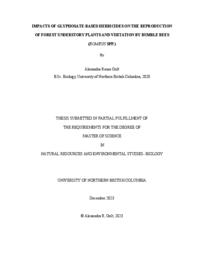

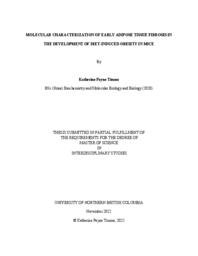


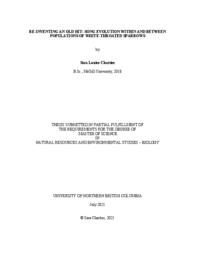


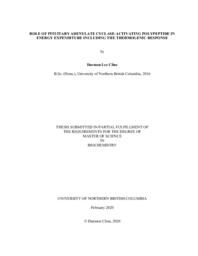
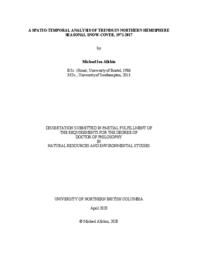
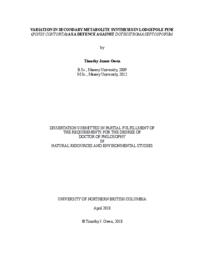
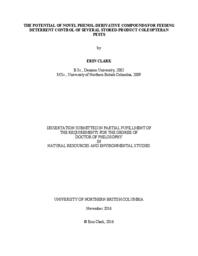

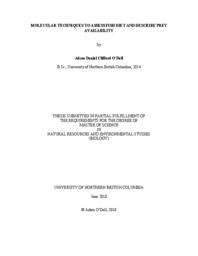
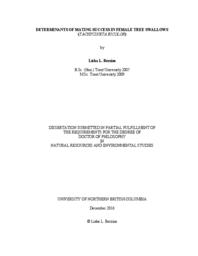
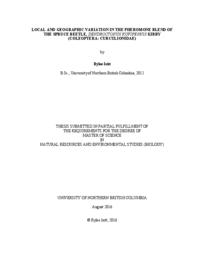


![Genetic variation of lodgepole pine (Pinus contorta var. Latifolia [Engelm.]) chemical and physical defenses that affect mountain pine beetle Dendroctonus ponderosae attack and tree mortality. Genetic variation of lodgepole pine (Pinus contorta var. Latifolia [Engelm.]) chemical and physical defenses that affect mountain pine beetle Dendroctonus ponderosae attack and tree mortality.](/_flysystem/repo-service/styles/solr_grid_thumbnail/repo-service/2025-03/28766-Thumbnail%20Image.png.jpeg?itok=LFcEerh1)
